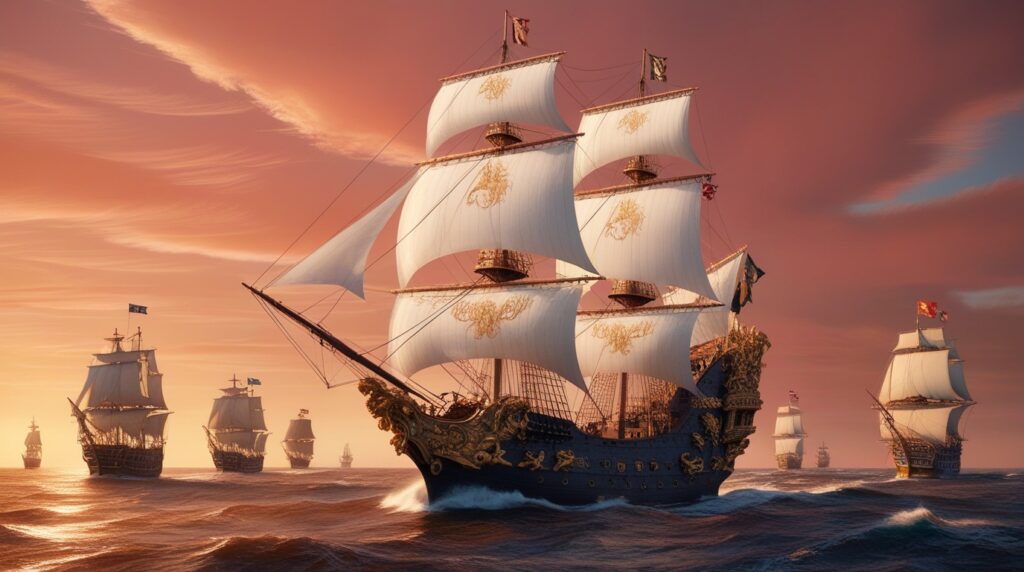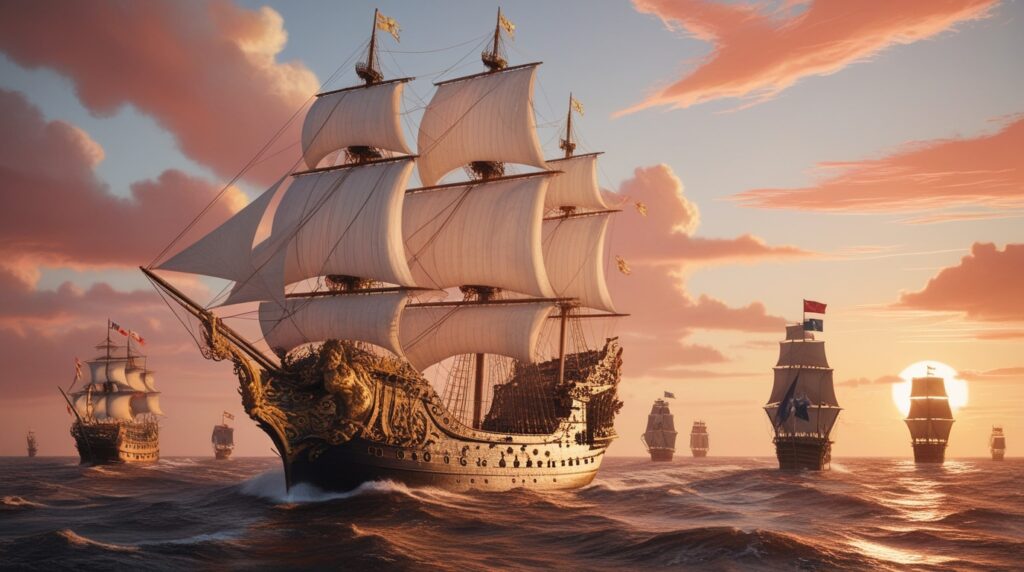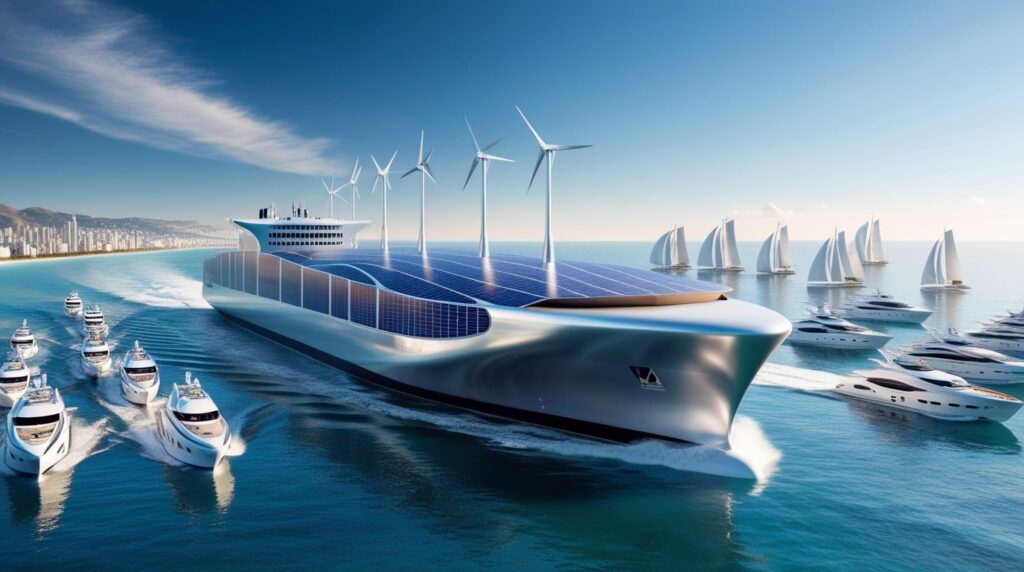
Ships have been instrumental in shaping human civilization, serving as tools of exploration, trade, and conquest. Their evolution spans millennia, reflecting advancements in engineering, materials, and navigation.
- The Dawn of Shipbuilding: Ancient Times
The earliest forms of watercraft were simple and rudimentary. Archaeological evidence suggests that humans used dugout canoes carved from tree trunks around 10,000 years ago. These vessels were primarily used for fishing, transportation, and hunting in rivers and coastal waters.
The Egyptians advanced shipbuilding by designing reed boats and wooden ships powered by oars. Around 3000 BCE, they constructed larger vessels for trade along the Nile River, featuring sails to harness the wind. This innovation marked the beginning of wind-powered navigation.
Picture Prompt: A depiction of ancient Egyptians sailing wooden ships on the Nile River, with triangular sails and workers rowing. The scene should include palm trees and pyramids in the background.
- Classical Antiquity: Greek and Roman Mastery
The Phoenicians, famed seafarers, revolutionized maritime trade in the Mediterranean around 1200 BCE, using ships like the galley. Their designs influenced Greek and Roman shipbuilding.
Greek triremes were engineered for speed and warfare, equipped with three rows of oars. The Romans adapted these for military and trade purposes, expanding their empire across seas. Roman ships carried goods like wine, olive oil, and ceramics throughout Europe.
Picture Prompt: A Greek trireme in battle, with multiple rows of oars, a bronze ram at the front, and soldiers on deck, surrounded by turbulent seas and distant islands.
- The Middle Ages: The Age of Trade and Exploration
The Viking longships of the 9th century showcased advanced designs for raiding and exploration. They were versatile, with shallow drafts allowing them to navigate both open seas and rivers.
In the 13th century, European shipbuilding surged with the development of the cog, a robust vessel designed for cargo transport. The caravel, introduced by the Portuguese, became famous during the Age of Exploration, enabling voyages like Christopher Columbus’s journey to the Americas in 1492.
Picture Prompt: A Viking longship sailing in icy northern waters, featuring a dragon-shaped prow, shields along the sides, and rugged sailors aboard.
- The Age of Sail: Global Expansion
Between the 16th and 19th centuries, ships like the galleon dominated the seas. These multi-decked vessels facilitated colonial expansion, trade, and naval warfare. The East India Company and other trade organizations used large merchant ships to transport spices, textiles, and precious metals.
Advancements in navigation, such as the invention of the compass and astrolabe, allowed sailors to venture into uncharted waters, culminating in the circumnavigation of the globe.

- The Industrial Revolution: Steam Power
The invention of the steam engine in the 18th century transformed shipping. Steamships like the SS Great Britain replaced wind-powered vessels, enabling faster and more reliable travel.
Iron and steel replaced wood as primary materials, resulting in stronger and larger ships. This era also saw the rise of luxury liners and warships, exemplified by vessels like the Titanic and ironclad ships during the American Civil War.
Picture Prompt: A steamship with large smokestacks, cruising through industrial-era harbors, surrounded by smaller fishing boats and bustling port cities.
- Modern Ships: The Age of Technology
Today’s ships are marvels of engineering. Cargo ships, oil tankers, and passenger liners dominate the seas. The advent of containerization in the 20th century revolutionized global trade.
Military ships like aircraft carriers and submarines showcase advanced technology, while environmental concerns drive innovations in green shipping, such as electric-powered and solar-assisted vessels.

Conclusion
From humble canoes to technologically advanced vessels, the history of ships is a testament to human ingenuity and our enduring relationship with the seas. As we face challenges like climate change, sustainable shipbuilding will define the next chapter of maritime history.
Let me know if you’d like images for specific sections!






